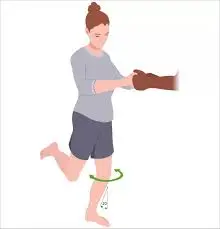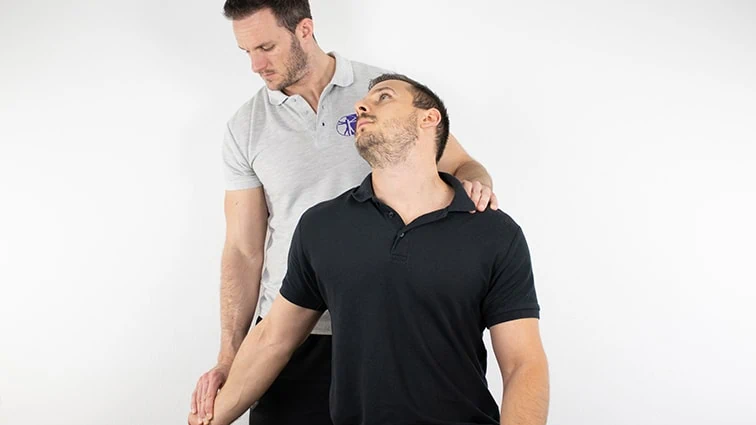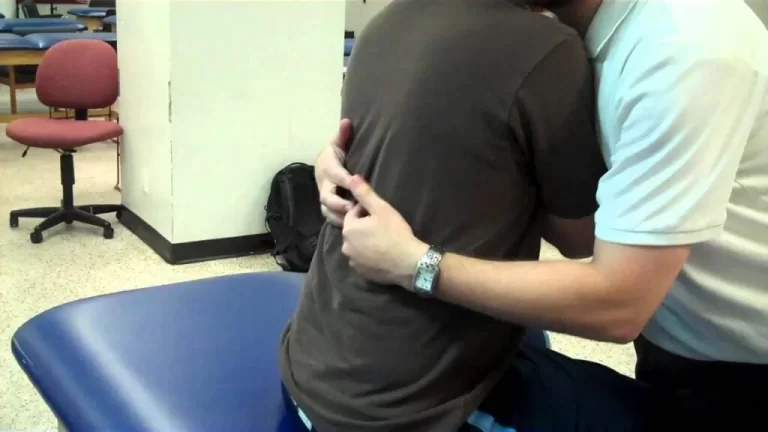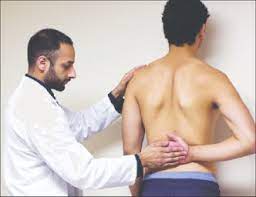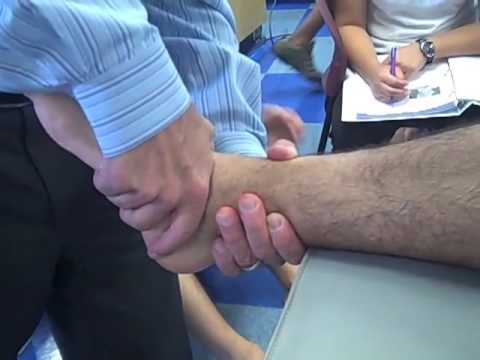Thessaly Test
The Thessaly test is a clinical assessment used by medical professionals to evaluate the integrity and stability of the menisci in the knee joint. This physical examination involves a patient standing on one leg with the other leg flexed at the knee to a 20-degree angle. While in this position, the patient rotates their foot internally and externally several times.
The Thessaly test helps to identify potential meniscal injuries by reproducing pain or mechanical symptoms such as clicking, locking, or catching. It is a relatively simple and non-invasive diagnostic tool that can provide valuable information about the condition of the knee joint and guide further medical decisions, such as the need for additional imaging or treatment options.
Table of Contents
What is the Thessaly test?
The Thessaly test is a valuable clinical screening tool used in orthopedics to evaluate meniscal tears or knee injuries. Meniscal tears are common knee injuries that can cause significant discomfort and dysfunction to affected individuals. Patients with suspected joint tears often report symptoms such as discomfort in the medial or lateral joint line and locking or binding of the knee during certain movements.
The purpose of the Thessaly test is to dynamically reproduce the load of the knee joint in order to obtain the symptoms described by the patients. Healthcare professionals can gather important diagnostic information by carefully observing the patient’s response to specific rotational movements while standing on one leg with the knee slightly bent. The idea behind this test is that a meniscus tear in the knee causes symptoms similar to what the patient described.
Karachalios et al.25 first described the Thessaly test in 2005 as a new clinical test used to detect knee ligament tears. Goosens et al. (2015), however, conducted a new high-quality study that reported a sensitivity of only 64% and a specificity of only 53%. This means that the Thessaly test is not an accurate test for detecting meniscal damage.
Purpose
Examination Test for Meniscal tears and lesions
Patients with suspected joint tears complain of pain along the medial or lateral joint line and possible locking or adhesions. The Thessaly test is based on the theory that a knee with a torn meniscus causes the same symptoms that the patient experienced. The test is the dynamic recovery of knee joint tension.
Technique
The patient is supported by the examiner’s outstretched arms while standing on one leg with flat feet. Next, the patient flexes the knee to a 5° flexion angle while performing three medial and lateral femoral rotations to the tibia. To instruct the patient to keep the knee flexed, the uninjured limb is tested first. Then, the test is performed with a 20° turn. If the patient complains of medial or lateral joint tenderness or a feeling that the knee is locked or stuck, the test is considered positive for a meniscal tear.
How does the Thessaly Test Knee work?
The Thessaly test for the knee is a clinical examination that evaluates the integrity and stability of the knee joint. Here are the steps to complete the Thessaly test:
Patient Position: The patient stands barefoot with feet shoulder-width apart and hands resting on a nearby support for balance.
Initial knee flexion: The examiner instructs the patient to flex the knee to approximately 20-30 degrees.
Test Execution: The examiner stands behind the patient and holds his hand firmly. The patient is asked to turn his body towards the tested knee, keeping his feet on the ground.
Medial Rotation Test: With the patient in this position, the examiner applies a rotational force to the knee by placing one hand on the patient’s distal tibia and the other on the proximal tibia. The examiner then internally rotates the knee (central rotation) while keeping the foot on the ground.
Lateral Rotation Test: After performing the medial rotation test, the examiner applies the same rotational force in the opposite direction externally rotating the knee (lateral rotation) while keeping the foot planted.
Observation of Symptoms: During both rotations, the examiner pays attention to any particular pain, discomfort, or clicking that the patient reports. The presence of pain or joint line discomfort may indicate meniscal pathology.
Repeat testing: The Thessaly test is repeated for each knee when both knees are evaluated.
Interpretation: Based on the presence or absence of pain or joint discomfort reported by the patient during the test, the examiner can assess the integrity of the knee joint and possible damage to the synovium. It is important to note that the Thessaly test is a clinical trial and must be performed by trained health professionals experienced in orthopedic assessments. It is usually used in conjunction with other diagnostic tools, such as imaging studies, to aid in the accurate diagnosis and treatment of knee injuries and conditions.
Scoring
The Thessaly test is primarily a clinical assessment procedure used by healthcare professionals to assess the stability and integrity of the knee meniscus. Thus, it does not have a defined scoring system, but doctors can use a subjective scoring method based on the patient’s reactions and observed symptoms. If a scoring system is used, it is often used by the researcher or physician conducting the study.
For example, a simple scoring method would assign a numerical value to each symptom on the test. A scale (e.g., 0-10) can be used to rate the patient’s reported level of pain or discomfort; a higher score indicates severe pain. In addition to binary values (e.g., 0 for absence, 1 for presence), other symptoms such as clicking or locking, presence or absence can also be observed.
The overall severity or likelihood of meniscal damage can be determined by adding or comparing these values. However, it is important to remember that the Thessaly test can be scored using a different method depending on the health professional, study, or organization administering it.
Does the Thessaly test have any risks?
Thessaly tests are risk-free. You may feel discomfort or tenderness during the test, but even if your meniscus is torn, you should not experience any severe discomfort.
According to some studies, the Thessaly test is not perfect, although it is better than other similar tests in determining whether or not you have a torn meniscus. A doctor usually goes beyond this initial step to diagnose an injury. You will probably want to do at least one image test after the Thessaly test, as they will give a more accurate conclusion.
FAQ
The test is considered positive for a meniscal tear if the patient experiences medial or lateral joint line discomfort or a locking/sticking sensation in the knee.
During the Thessaly test, you stand on one leg and roll from side to side while your provider supports your arm. When you need a McMurray test, you lie on your back while the provider bends and moves your knee. In both tests, your provider will feel and listen for symptoms of a torn meniscus in the knee.
Studies of the diagnostic accuracy of the Thessaly test are very heterogeneous. The original study found high sensitivity and specificity for both medial (sensitivity, 89%; specificity, 97%) and lateral (sensitivity, 92%; specificity, 96%) menisci.
Thessaly can be used to examine the medial condyles.McMurray and joint tenderness should be used if a medial meniscal tear is suspected. For lateral meniscus, McMurray is suitable for screening and all tests are useful in the clinic.

